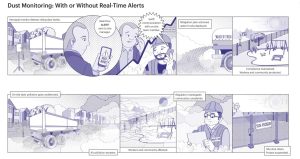
Source: www.aeroqual.com/blog/ultimate-remediation-monitoring-guide
Remediation is a huge part of urban regeneration and growth. If done right, transforming past sites into commercial developments can yield large investment returns. There are many things to keep in mind when attempting to deliver a successful regeneration project, and ensuring the health and safety of your workers and the community is key.
But first, what is at stake here? If improperly managed, the impacts from a large-scale remediation project can be harmful to everyone involved. On-site workers and surrounding communities can be harmed by damaged air quality caused by the project. This can result in hefty fines, large delays, and in severe cases, the total shutdown of the remediation project.
So, what does success look like? Air-quality monitoring armed with real-time alerts can help site operators manage air quality. Successful use of these systems will notify you as soon as dust levels have risen above safe levels. The effects can then be mitigated. The use of real-time monitoring systems allows the smooth operation of the remediation project with minimal disruption.
When gathering air-quality data to maintain compliance, the measurements must be as accurate as possible. Inaccurate data can erode trust and allow dust levels to rise beyond safe levels. In Aeroqual’s full article, they outline the steps necessary for achieving near-reference data. Keeping instruments calibrated is among the most important steps to achieving this.
Aeroqual’s ground-breaking site contribution technology empowers you to:
- Act swiftly before an exceedance occurs.
- Never again get blamed for your neighbours’ actions (or inactions)
- Accelerate project timelines and limit unnecessary restrictions on operations.
- Access real-time data from anywhere using the live dashboard.
Access the full article from Aeroqual’s informative blog below.
Full Article




